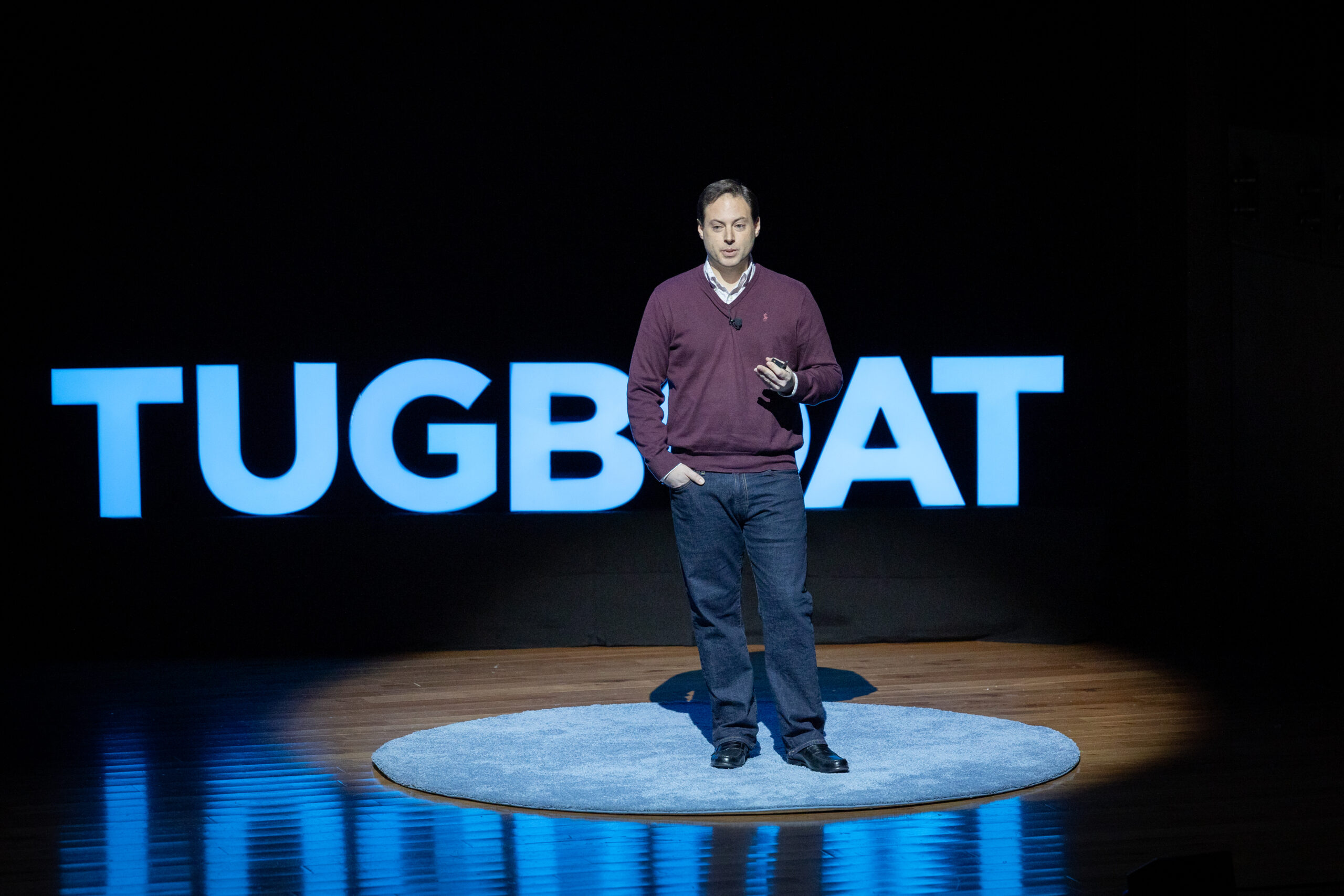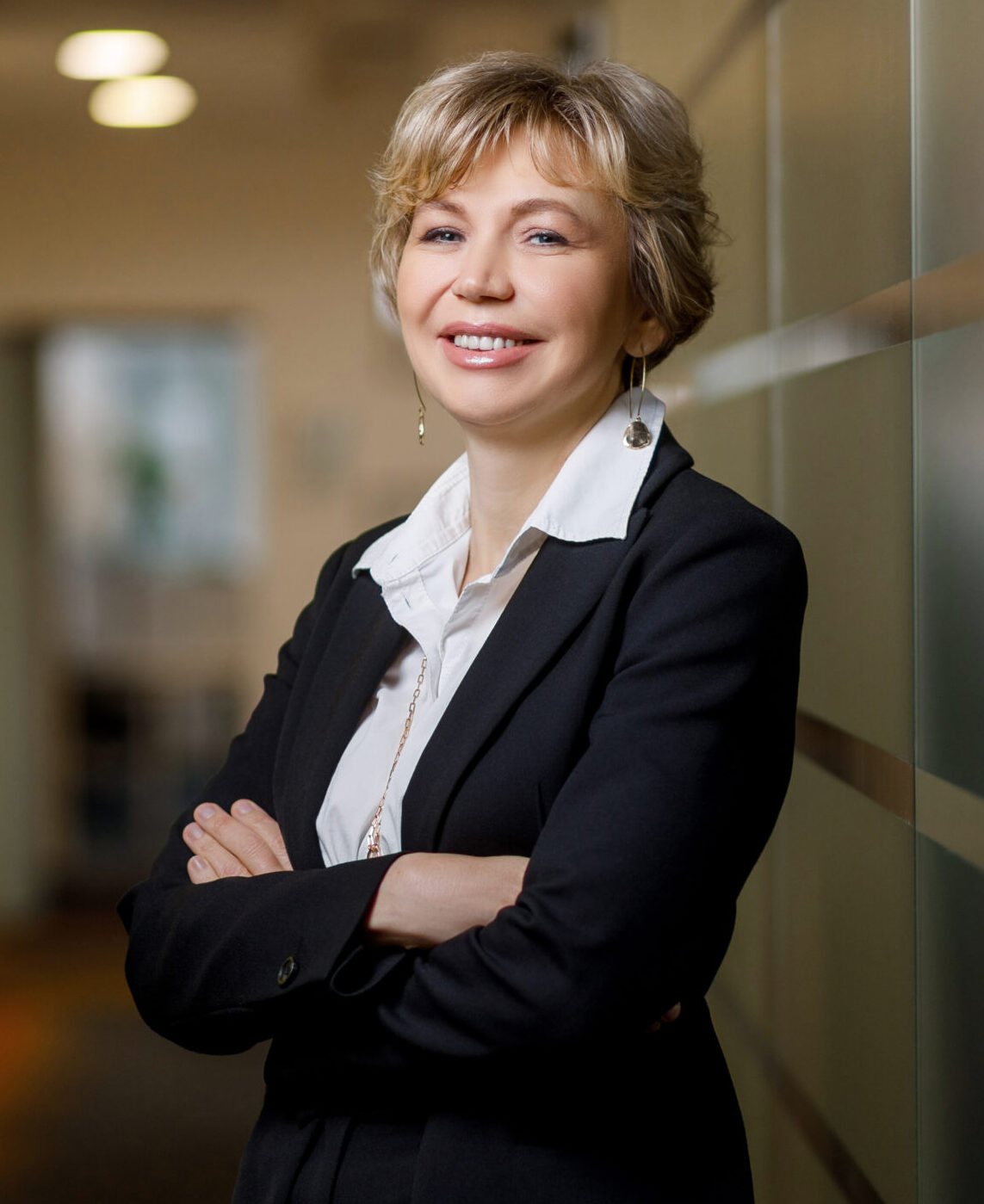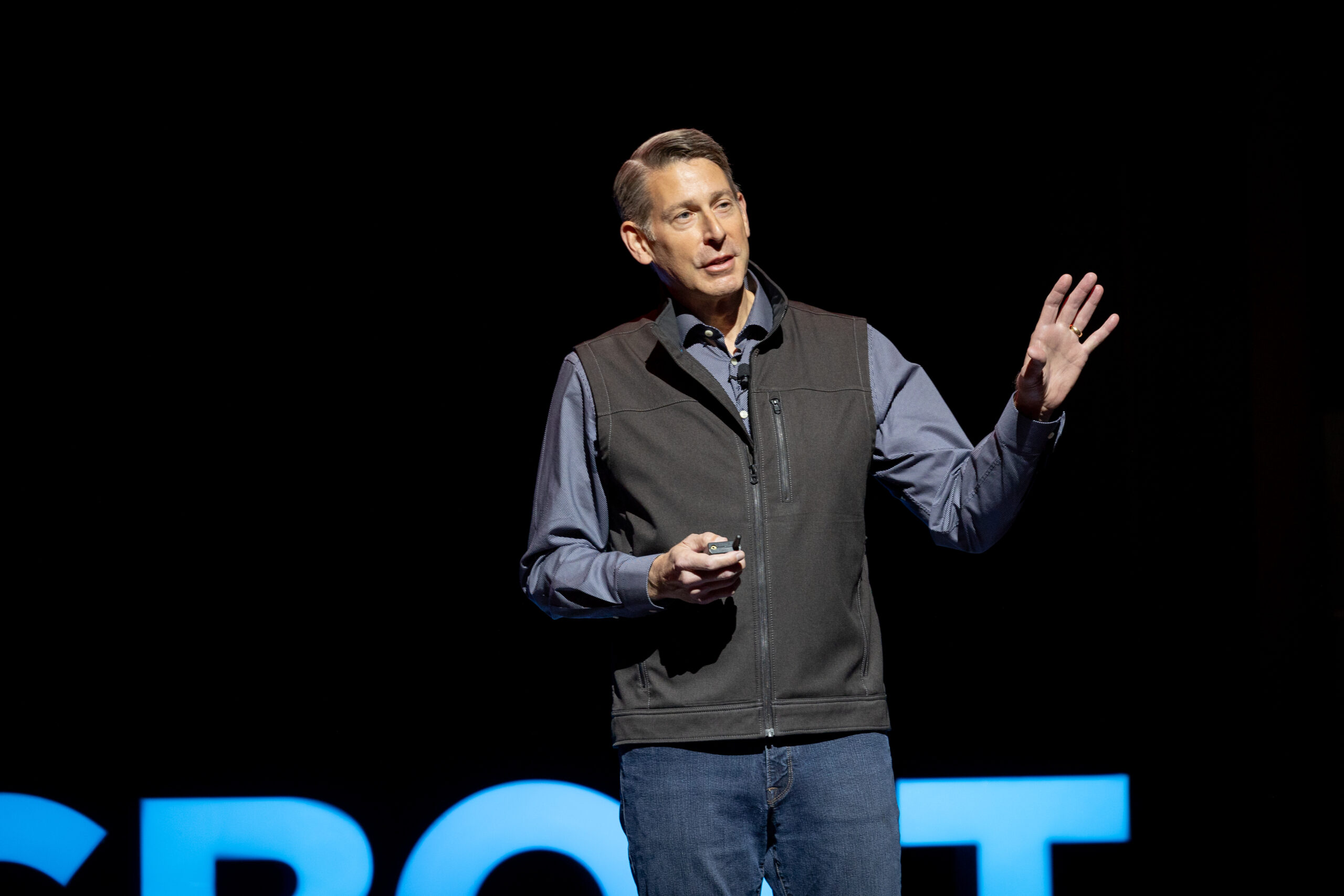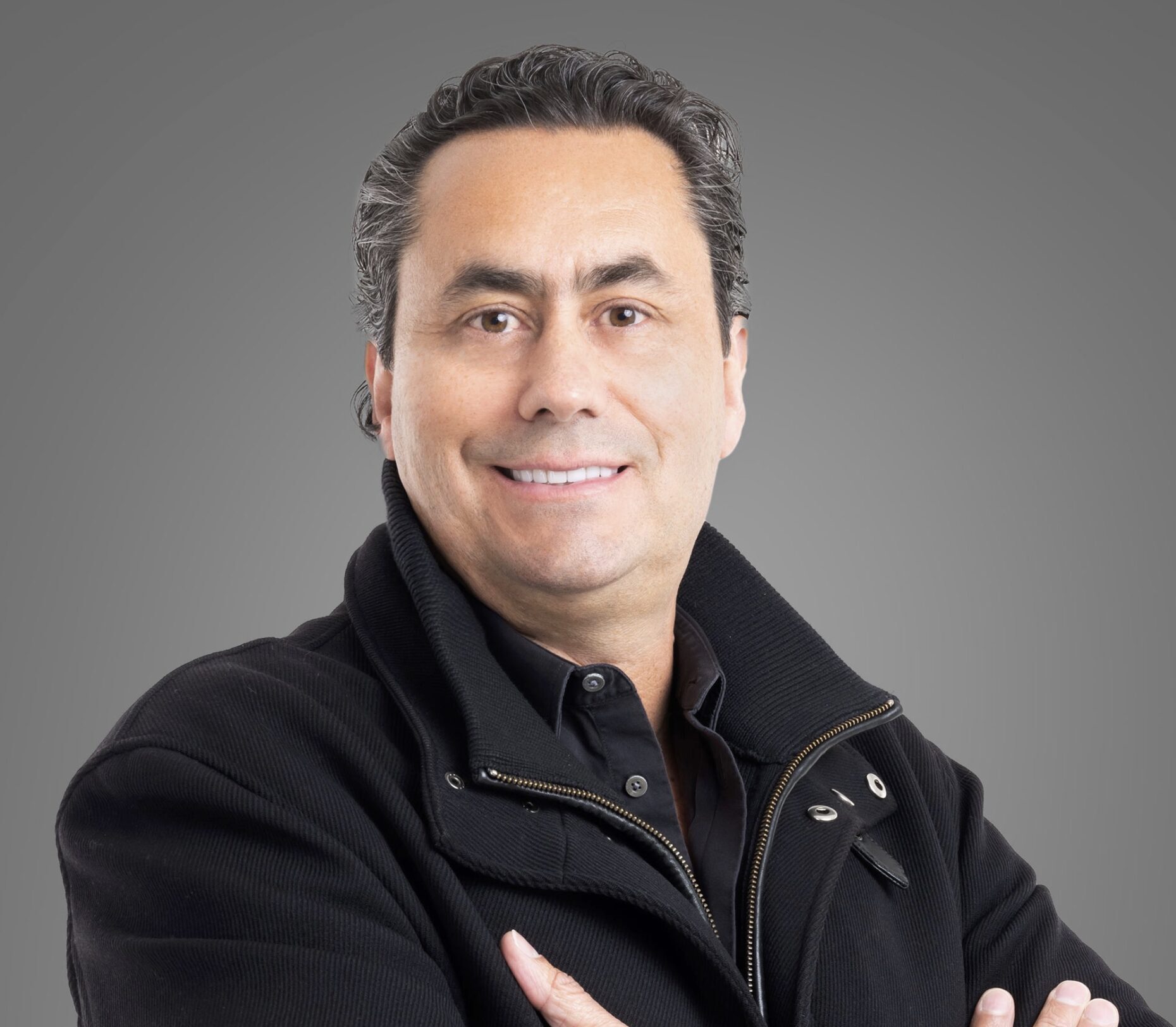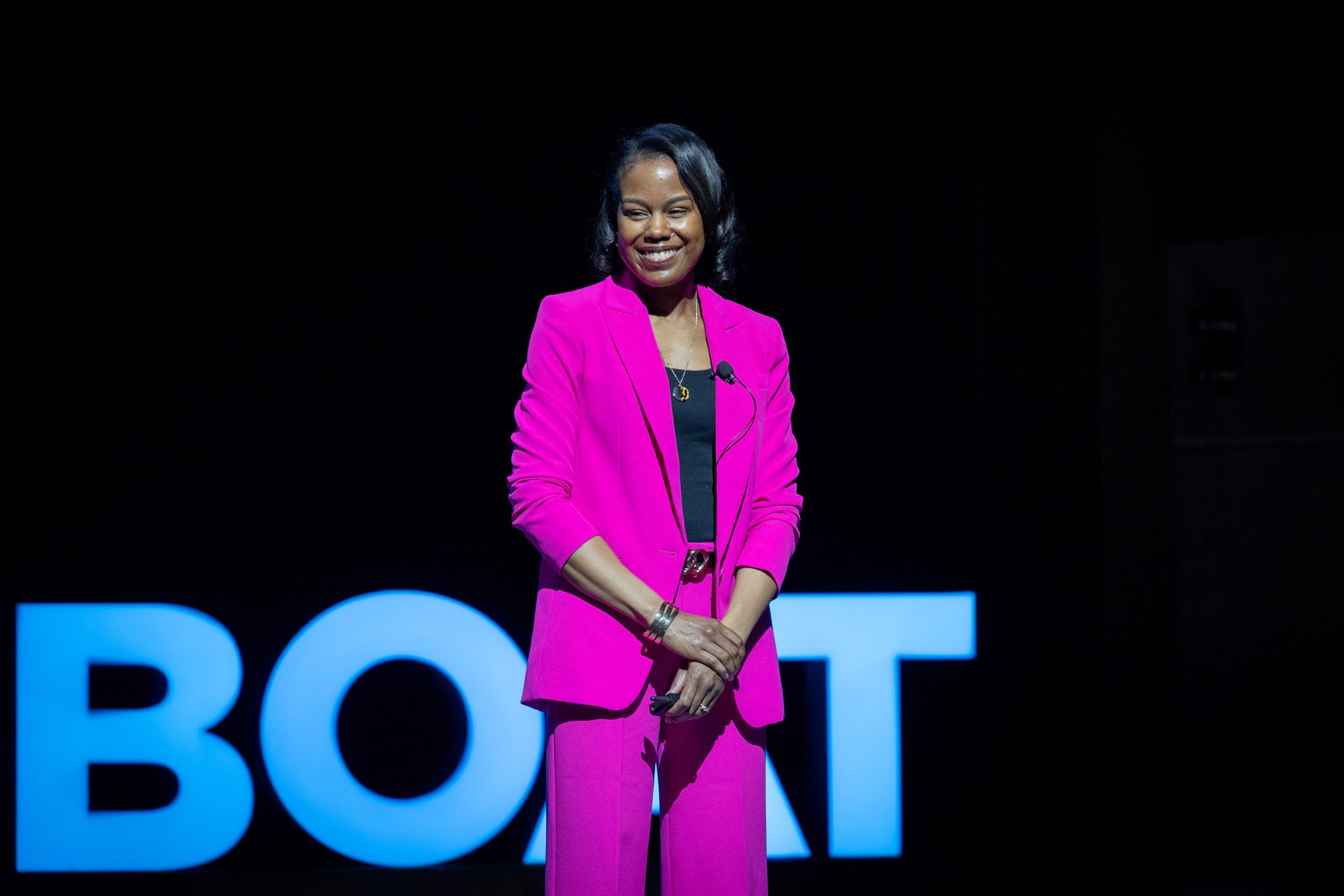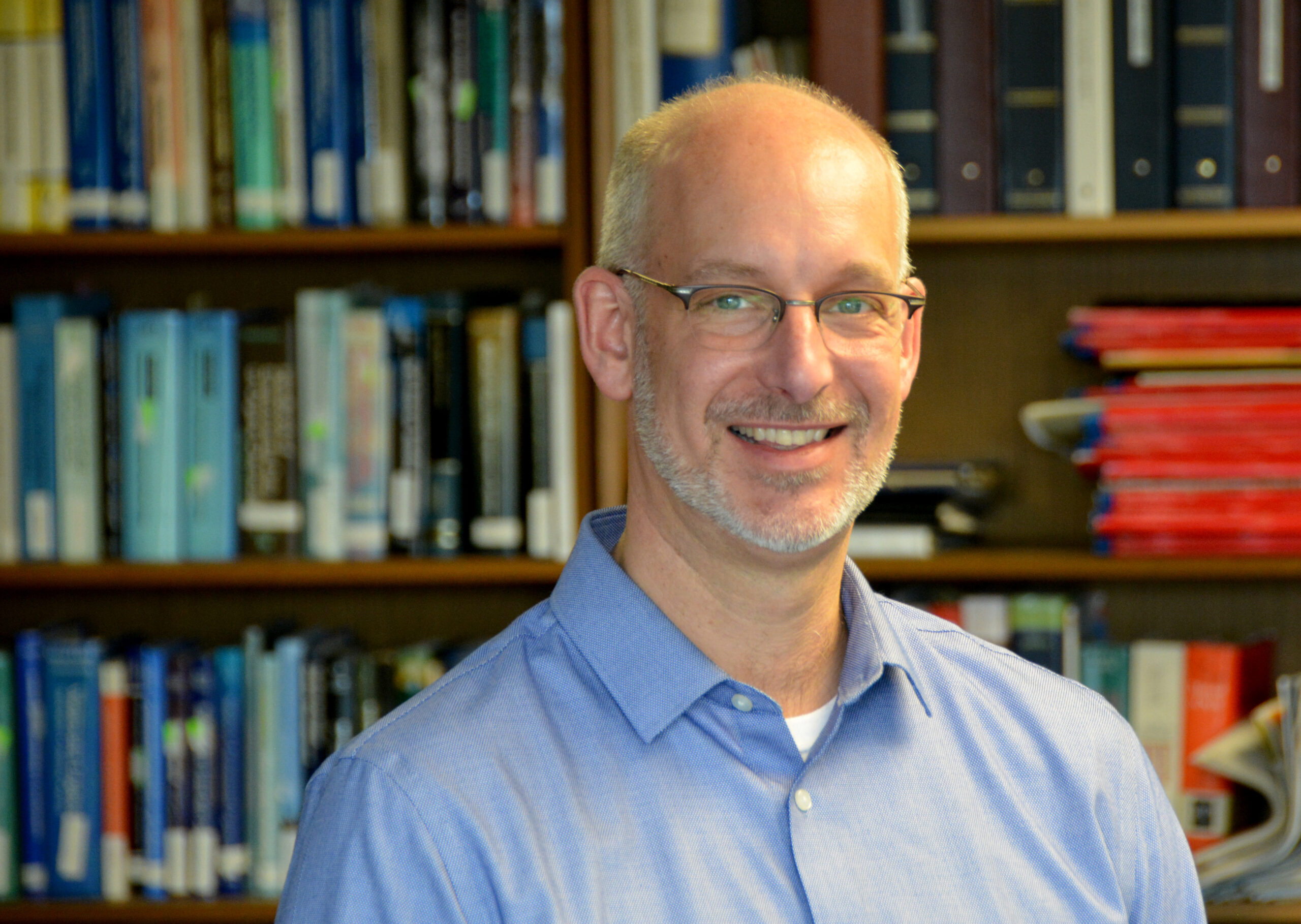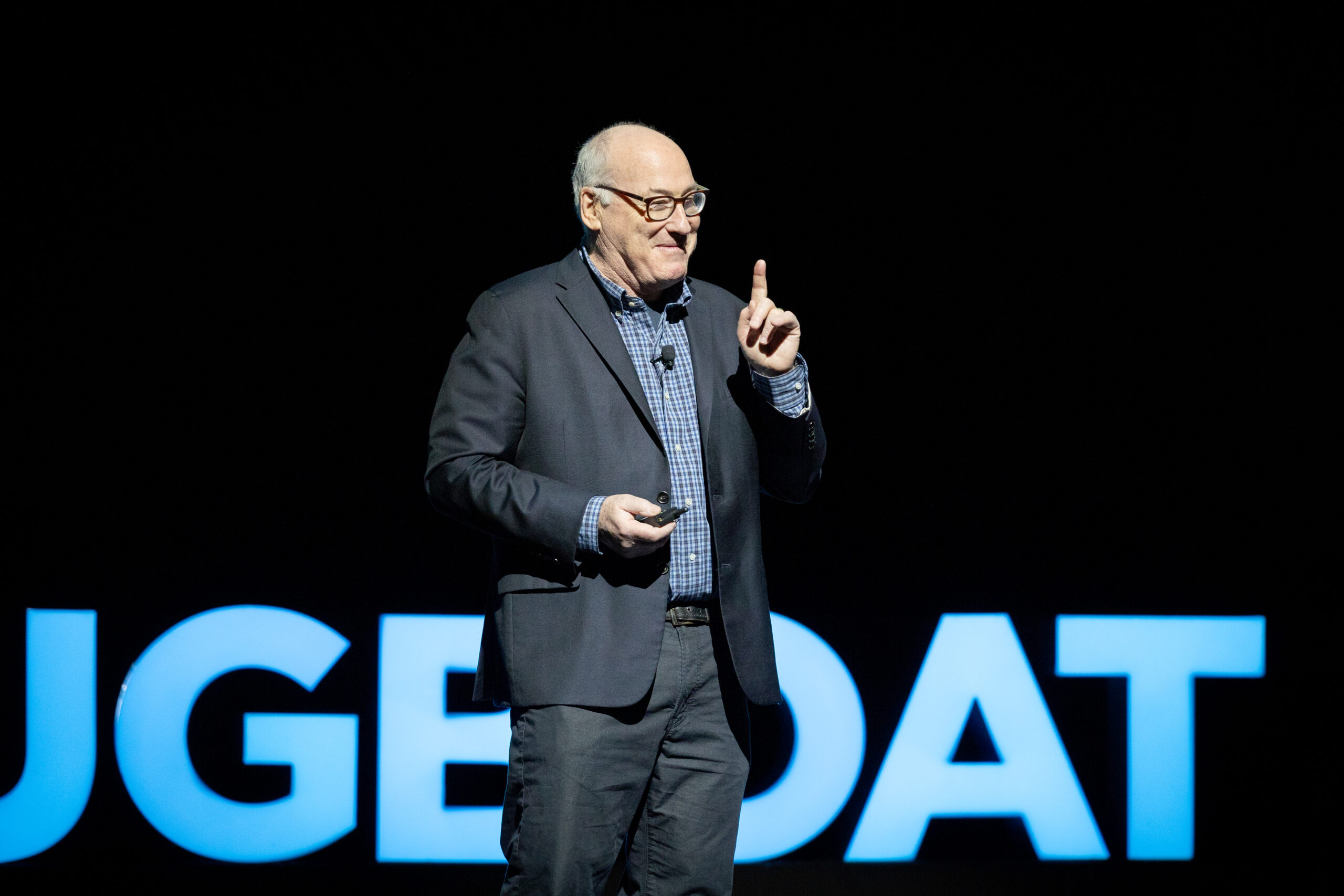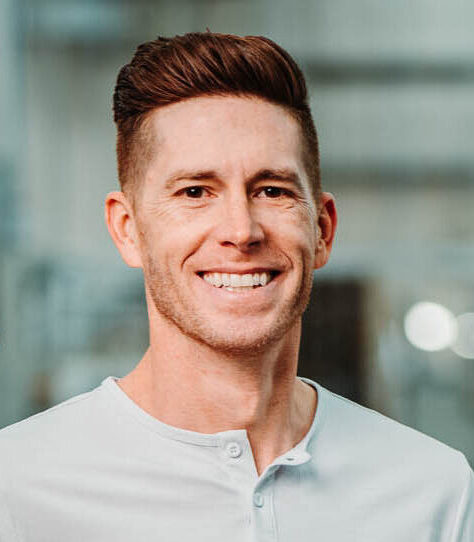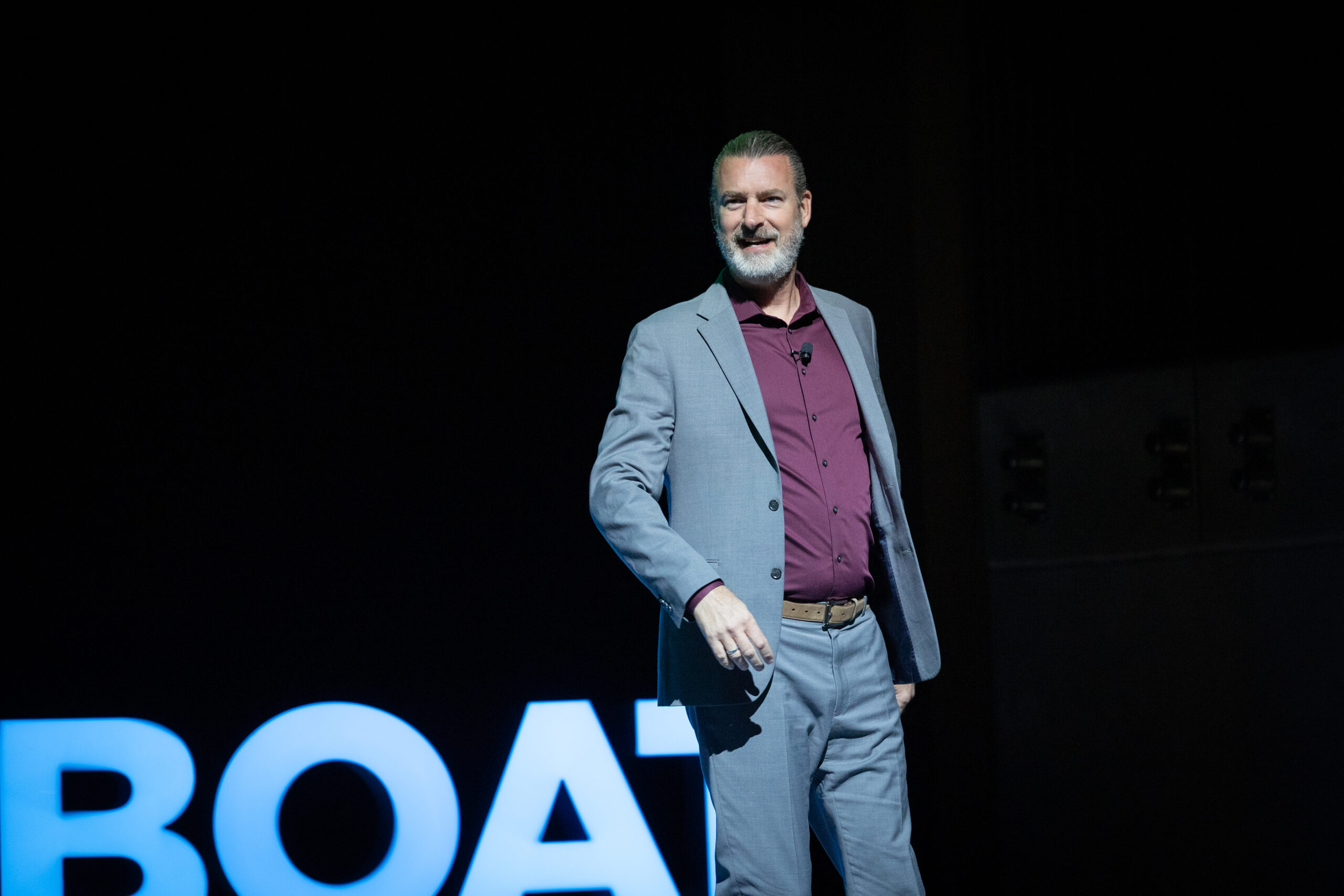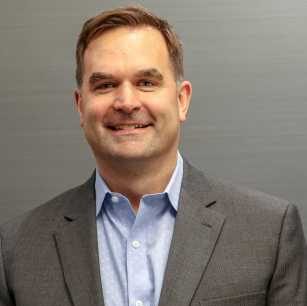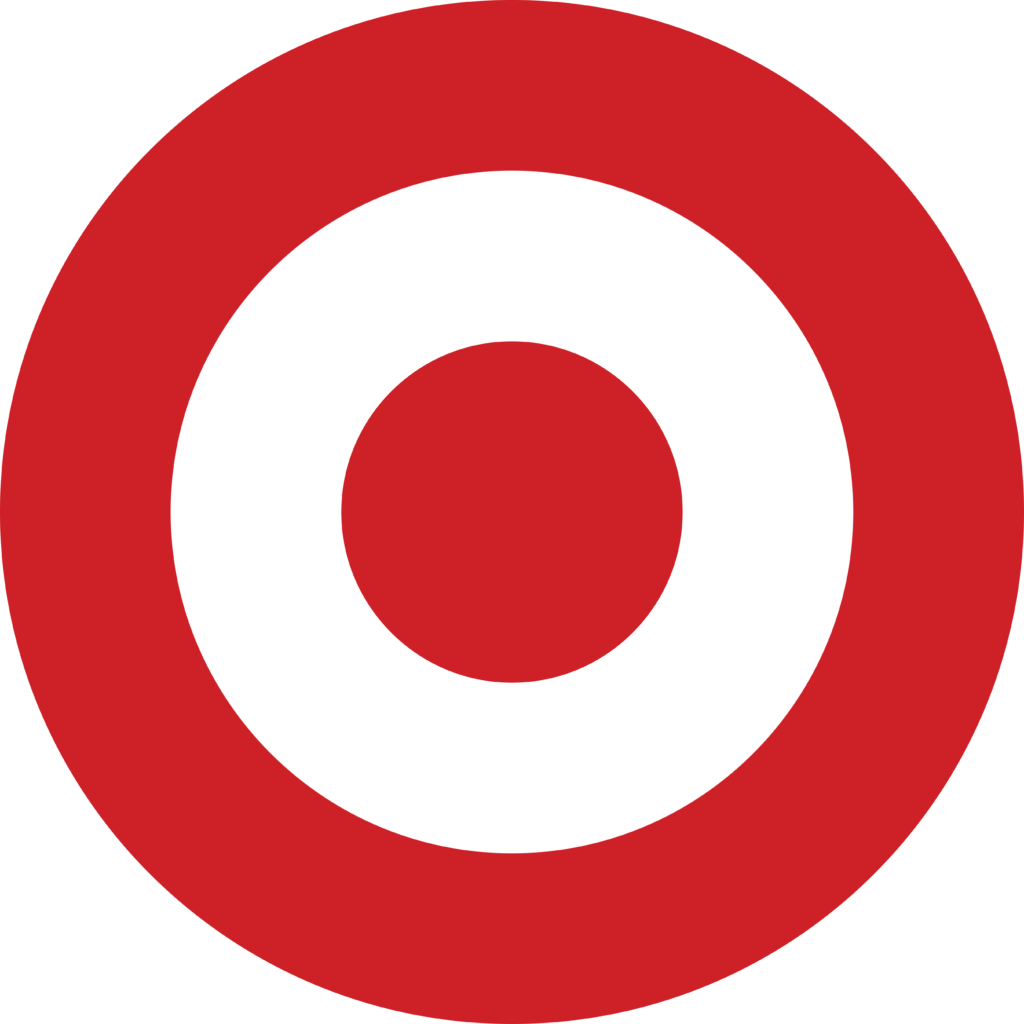The Predictive Power of Culture Analytics
Evergreen® companies, who value their teams and put People First, believe deeply in the importance of a strong culture. However, the critical value of a strong culture is not simply a matter of faith. In this Tugboat Institute® talk, Oliver Staehelin shares concrete data around the specific, strategic advantages a strong culture can give a company. In a world where competition for great talent is not going to ease anytime soon, this is not an optional undertaking for the company that wants to retain a strong team over the long term.
Oliver was an early member of Tugboat Institute, while he was leading the culture assessment company he co-founded with Stanford Professor Charles O’Reilly, Pomello. His early career and all of his subsequent work confirmed for him that culture is not a ‘soft’ topic, nor are its benefits immeasurable.
Watch and be inspired to transform your company’s culture into one of its greatest strategic advantages.
The Entrepreneur as Artist
We typically think of art and business as very separate domains. However, as an entrepreneur and founder of two tech companies, I have come to see my work as deeply similar to that of an artist. Both are creative endeavors, both require vision, focus, skill, and determination, and both need space and freedom to thrive.
I didn’t see it this way when I founded my first company, Lohika Systems, in 2001 when I was not yet 30 years old. I followed the playbook I thought I was supposed to, and I created a Board of Directors populated with former successful entrepreneurs/investors who would, I thought, lend welcome expertise and advice to me as I built the company. The Board members had partial ownership of the company and, as a result, I did not have a majority stake in my own business. It didn’t take long for me to realize that I was in a bad situation. Probably in great part because I was such a young woman, my Board members started second guessing me. They stepped in and micromanaged me all the time, and I quickly realized that I was no longer in charge; my vision for the company I had set out to create could not flourish. Within just two years, it became clear I had to leave, so I did.
Although losing Lohika was painful, it taught me very important lessons. I didn’t waste time and set out to start again; in 2003, I founded Svitla Systems. Like Lohika, Svitla is a digital solutions company that serves clients globally. Our mission is to advise and implement modern, sustainable solutions for our clients, using the power of digital, cloud, data, and intelligent technologies. As I built Svitla, I was careful not to make the same mistakes I had made with Lohika.
To begin with, I am the sole owner. I don’t have and never have had any investors. This meant that I had to bootstrap the business and pay for everything myself, but it was well worth the difficulty that posed. As a result, I don’t answer to anyone else. It is up to me to decide if I want to start another division, if I want to allocate money this way, or allocate it that way. It gives me freedom, just like the freedom an artist has when they paint and decide which paints to use, what the canvas is going to be, and what the subject of the painting is going to be. This kind of freedom is unique to a private, Evergreen® company.
It goes without saying that artistic inspiration is not the sole driver of my company, of course. The freedom to create effectively requires smart strategy as well. You have to know your market and you have to do your research. I have surrounded myself with smart people who are experts in their fields and who can help advise my vision and make it practicable. First, there’s my team. I have very experienced people on the team, people who know more than I do, and they provide me with critical input. Because of their expertise and the collaborative culture we have created, in many cases the team makes the decisions on strategic issues. I have the final say, but because I have been able to build this team myself, I have all the confidence in the world in them.
A second, equally important group whose input is invaluable for me is our clients. We learn constantly from our clients. This of course is not unique to an Evergreen company, however the freedom to choose the right clients and to build processes that create feedback loops only exists when the operator and her team are truly running the show. In a public company or in a company with a powerful board or investors, they can say, "No, you cannot do that because it doesn’t align with other financial interests." They will almost always choose whatever they perceive as the biggest bang for the buck, and you can have all the substantiation that you want, but if they decide that's not where they get their best ROI, they're going to kill it. At Svitla, we can de-prioritize short-term gains when necessary if we think a project has long-term value, or if we think a certain client can teach us important lessons.
A concrete example of a decision we have made recently that we would not have been able to make in my old company is the creation of our Center of Excellence on AI. I presented this idea to my team, and we have run with it. We are doing it because we see the future opportunity and we need to be ahead of the curve, but when we created it, we didn’t have any clients yet. Therefore, we were spending money without the certainty of a return in the near future. But it was the right thing to do. Honestly, I made this decision together with my team. In this way, perhaps the parallel with the artist is not perfect, because I do not operate in a void. I take their input, I need their buy-in, and I work with them to design the products and processes we set out to create.
In the case of Svitla, the way I have chosen to build my team is another example of the freedom I would not have if I was controlled by investors or a board with a majority share of the company. Our team is very international. Our original team of software engineers is Ukrainian, like me. They are overseas. We also have team members in Mexico, Costa Rica, and Argentina, as well as here in the States. Outside of the software engineers and technical leadership, the majority of them are in sales and recruitment. This diversity sometimes creates challenges when it comes to communication and culture creation; language barriers and different cultural norms can present challenges within an organization. But since I am fluent in Ukrainian, English, and Spanish (my husband is Spanish), I did not have the limit of language and culture as I built our team. I was able to recruit and hire the absolute best people, no matter where they lived and what language they spoke. If my company is going to last 100 years, of course, it can’t always depend on me, but I am in the process of creating a culture and a series of norms that will allow this international team to function effectively far into the future.
Founding and building a company is hard work. There is no way around that. However, in the 20 years that Svitla has existed and as it has grown, I have come to see a certain elegance in my work. Like an artist, as the CEO of an Evergreen company, I truly have the freedom to create and make decisions as I build and lead. I have felt the pressure from outside investors and owners, and I have experienced the frustration of having this freedom taken away; it’s awful to watch something you envisioned and created taken over and changed by people who do not share your vision and whose objectives are so different from your own. At Svitla, with the freedom to create as I choose, I have been able to build something extraordinary. I don’t think that could have happened any other way.
FUNomenal Innovation at Radio Flyer
It is rare and challenging for businesses to last beyond the first generation of ownership and leadership, and rarer still for them to last into the third generation and beyond. There are many reasons for this, but a common one is that a company, once it has created its breakout, successful product, will cease to innovate and change. When vigilance on this front diminishes, it is nearly impossible for a company to remain competitive and survive.
When Robert Pasin started work for the very successful company his grandfather had founded, Radio Flyer, he was surprised to discover that his family’s company had fallen prey to just this. Innovation was minimal and as a result, the company was in danger of a decline. He undertook to rebuild a culture of innovation and discipline, and was remarkably successful; Radio Flyer was recently named to the top ten Fast Company list of Most Innovative Companies for 2023.
Watch Robert’s Tugboat Institute® talk and learn what strategies he employed to turn their biggest weakness into their greatest strength.
Better Together
In Mexico, we have a saying that goes like this; “Educa a un niño y educarás a un hombre. Educa a una niña y educarás a una familia.” In English, “If you educate a boy, you educate an individual but if you educate a girl, you educate the whole family.”
At Shasa, the fashion company I founded and lead with my brother Armando, we believe deeply in the power of empowering women. It has informed our growth and identity over the years, both in terms of how we manage and grow the company, and in terms of how we give back to our communities. As I look back over the last 20 or so years, in fact, I find it hard to separate which came first, our intentional focus on women within Shasa, or our work with a girls’ orphanage we have helped build, Casa Hogar Alegria.
Armando and I worked hard for many years to build Shasa into the large company it is today. You can read about how we did that in an article he published with Tugboat Institute’s Evergreen Journal in 2022. From the beginning, once it was clear that fashion was our focus, we focused on women’s clothing; I suppose the connection to women started there. As we built the company, between the people who designed and made the clothes to the ones selling it in the stores, to the ones helping us devise strategies around marketing and growth, it naturally happened that we grew into a company populated mostly by women. Today, over 85% of our 2000 employees are women, and we are proud of that.
When we were in the earlier stages of building Shasa, our wives became involved in an orphanage for girls that was founded in 1997 – Casa Hogar Alegria. Not long after, we had grown the company to a place where it was clear we had a future, and where we began to understand clearly what kind of company we wanted it to be. In essence, though we didn’t have the language for it at the time, we knew we wanted to be an Evergreen company – one that intends to endure for the long term, that is committed to staying private to retain independence, and that cares deeply for the people in the organization and in our communities. Groups were starting to approach us to sponsor their community projects and we wanted to make a choice that would align with our Purpose and be meaningful for our whole company. We looked at what they were building at Casa Hogar Alegria and decided to make that our exclusive focus; we understood that we could have far more impact by focusing all our efforts on one project, and this one aligned so perfectly with who we had become as a company.
First, I’ll share some history of the evolution of this beautiful project. Then, I will explain how deeply integrated it has become to our Purpose and our identity.
When Casa Hogar Alegria was founded in 1997, it took in eight girls, and looked after them in a rented house. The group that founded it was responding to a need that was sadly increasing in Mexico – an abundance of abused and abandoned young girls who had no one to take care of them and were living on the street. The state in Mexico has projects to support orphans, but the budgets are badly insufficient to care for these children in a meaningful way. It was clear from the start that housing was just a small piece of the support that would be needed to raise girls who were strong, balanced, and prepared for the world. In addition to food and shelter, the girls need emotional and behavioral support, they need education and support in their schooling, and they need the social skills and training to grow into successful, productive women. Therefore, at Casa Hogar Alegria, the girls are supported by an interdisciplinary team of pedagogues, psychologists, educators, and administrators. This comprehensive model is quite unique in Mexico.
From the beginning, we supported Casa Hogar Alegria financially, but we quickly become interested in this unique model. Once we had decided this would be the sole focus of our service to the community at Shasa, we became deeply involved. For the first ten years, Shasa was by far the largest donor to the project. In the years since, my brother and I have managed to recruit a number of other values aligned and purpose driven companies to join us, and Casa Hogar Alegria has grown to encompass four different houses in three locations, supporting 213 girls and employing over 90 people. I became the president of the board of directors in 2020, and while I will be passing the torch to someone else soon, I have helped set the mega goal of serving 500 girls by the year 2025. It’s a stretch goal, and we might be a few years late in getting there, but we are on our way.
How does all of this align tightly with who we are at Shasa and what does that look like? First, like I said, most of our employees are women. Further, many of them are women who came from challenging circumstances, and for whom their role at Shasa has allowed them to build a stable and wonderful life, raise their children and care for their families, and grow and be fulfilled as people. At Shasa, it is important to us to develop our team, and we prefer to hire from within when at all possible. We have many, many employees who started out in entry-level positions, at the store, in the manufacturing facilities, or in our offices, and who have developed and grown into leaders. For this reason, the work with the girls at Casa Hogar really touches them personally. Even if they were never orphans, they can relate to the plight of a young girl with few resources and prospects in today’s society.
Conversely, it is incredibly meaningful for the girls to interact with the women on our team. They hear their stories and are inspired to see possibilities for themselves. Most of them come from a place where they have no role models who are successful, independent women, and when they meet the women on our team, they start to be able to see a better life for themselves. It motivates them in school and beyond, and they start believing in the possibility if their own success.
These important interactions take place in lot of different places and ways; our team’s involvement with Casa Hogar takes many forms. Our employees elect to spend time with the girls at Casa Hogar in both formal and informal ways. We host big celebrations at the houses for holidays, such as Christmas and Children’s Day, which is big in Mexico. At these celebrations, we have all sorts of activities for the girls, from cupcake-making to jewelry-making and more. Everyone wears costumes and it’s so much fun. We also have two collections per year at Shasa that are designed and sold specifically in support of Casa Hogar, one of which launches at Christmas and one that launches on Children’s Day, so those celebrations incorporate those launches as well. As often as possible, we invite the girls to our stores, to see what our company has created and what it stands for, and also to see what kinds of opportunities exist for them in the world.
As you can see, the meaning and the benefit of the relationship between Shasa and Casa Hogar is reciprocal. The director of Casa Hogar Alegria tells a story that illustrates perfectly the symbiotic relationship between our two organizations. When people come to visit the house where the babies live, she brings them to see two little girls who share a crib. She says, “Why do you think these two babies share a crib?” People’s first guess is usually that they are twins or somehow related. “No,” she replies. “They are nothing to each other. They have no shared history. However, when they are alone, they cry. When we put them together, they are happy. It’s like Shasa and Casa Hogar Alegria. We are better together.” What could be more People First than that?
From Facts to Impact: The Strategic Art of Storytelling
Humans understand and remember best through stories. The power of a good story to make a message memorable, meaningful, and impactful cannot be overstated. In your business, therefore, telling the story of your company effectively and well is crucial. This is doubly true for the Evergreen® business, whose story communicates the Purpose that drives their existence and the values that define their team, operations, goals, and culture.
In this Tugboat Institute® talk, storytelling strategist Kelly D. Parker addresses the why and the how of great storytelling. She provides us with a deep understanding of the importance of telling your story right, as well as specific strategies to employ as you tackle this important project. Most importantly, especially for the values-driven Evergreen company, she explains that the job of telling your company’s story – clearly and authentically – is not simply the job of the marketing team or even the leadership team, but rather of every person in the organization.
Watch and be inspired to tell your company’s story even more effectively than you are today.
Partnering with Academia to Innovate and Grow
Innovation is key to the growth and survival of any company. As an Evergreen® company that’s been in the continually changing field of environmental science for almost 50 years, we have a long history of innovation. Pragmatic innovation has been key to our survival and growth and is a core value that has been built into the processes and systems that define our organization. One thing that has been a little unique at LimnoTech throughout is the way we innovate through longstanding, purposeful partnerships with academia.
Our company started back in 1975 when environmental science was in its infancy, and when our founders at the University of Michigan were just figuring out how to match the brand-new capacity for numerical computing to the profound environmental problems we were seeing in the Great Lakes. Paul Freedman, a graduate student at the University of Michigan, saw the opportunity to create LimnoTech in collaboration with his research advisor Ray Canale, and ran the company for its first 47 years.
The spirit of research is built into Limno Tech’s DNA. We are an environmental science and engineering firm providing water-related services to clients throughout the United States and internationally. Our early partnership with the University of Michigan gave us a special opportunity to do important, innovative work. And since then, it has been a natural fit for our company to partner with academia whenever the opportunity arises. Our partnerships have resulted in many strategic advantages and have created some of our most exciting opportunities for growth, expansion, and meaningful work.
The University of Michigan partnership shaped our company during its formative years as we developed computer models to describe how natural systems like lakes and rivers worked, and as we proposed solutions to fix the problems created by environmental pollution. In those early days, the University was a continual source of new ideas and strategic hires. Over time we expanded the relationships to include other great schools: Notre Dame, Michigan Tech, the University at Buffalo, and even historic rivals like Ohio State. These days our partnerships are nationwide, including institutions all over the country and spanning many disciplines: science, engineering, design and planning, and the social sciences.
One example of our partnerships with academia today is our relationship with the Harvard Graduate School of Design, where I and others in our firm have served as lecturers and studio critics for more than a decade now. Our relationship with Harvard felt a little unconventional at the start; we’re mostly engineers and scientists, and Harvard’s design school has deep roots in the arts and teaches core design principles that felt very different from our normal ways of working.
One of our first experiences with Harvard had us in a design competition working with one of their most notable professors in Landscape Architecture, doing the core design and planning of a huge portion of the Toronto waterfront that included a massive river relocation and restoration process. It was an intimidating project, because in our experience such projects were usually led by engineers like us who do the hard technical planning work first, and figure out the human benefits later. Instead, our project was led by Michael Van Valkenburgh, a professor in practice at the Harvard GSD and leader of a growing design firm, MVVA, in New York City. Their approach to problem solving was very different from ours – creative, exploratory, interdisciplinary, and to my eyes, messy. It was very different from our previous work, which was cautious, linear, and grounded in scientific approaches. We were proud of our ability to solve complicated scientific problems, but the problems we were starting to see in our field were much more than that – complicated technically, but also financially, organizationally, socially, and politically. We needed better approaches for problem solving, and our new collaborators had them. Michael and his staff at MVVA were able to think about all the dimensions of a wicked problem at once. But delightfully, they needed us too – to provide clear answers to technical questions and hard boundaries for their proposed designs, and also to spark new ideas born in our years of technical experience.
We made an explicit decision to learn from our new colleagues, and it completely changed the way we work. It wasn’t always easy – at times our staff was bewildered by requests to build accurate computer models based on design team models constructed out of cardboard and construction paper. The pace was also a shock – our new collaborators in landscape architecture generated new project ideas on a 24-hour cycle, and we had to adapt our capacity to build and apply computer models as fast as they could ideate. Spending time talking and working with these folks changed us, injecting LimnoTech with a level of creativity and an openness to viewing things in a different way that has made us so much better.
Thanks to our collaboration with them and the dual expertise we are able to bring to the table, we are now working on projects in Dallas, Tulsa, St. Louis, Toronto, Detroit, Buffalo, the Middle East, and Europe. The Don Lands design competition in Toronto turned into a billion-dollar project that’s now under construction, and it has been a game changer for our little company.
A second, powerful way that our relationship with Harvard has changed who we are and created opportunities for us is through their network. Harvard’s design program is influential, and most of the professors we have worked with there are professors-in-practice, teaching part-time and running their own firms. They are all connected through a strong, international network that extends to other schools like the University of Pennsylvania, Berkeley’s design school, and the University of Virginia. This network has led to dozens of creative engagements and enormous opportunities for our firm over the years.
A second example of academic collaboration takes us full circle back to the University of Michigan, but now engaging with a very different team of experts outside of our water science roots. A few years ago, an engineering professor and long-term collaborator, Dr. Peter Adriaens, became interested in how our understanding of water and its role in product supply chains could have implications for the performance and value of companies. This was a puzzle that others had tried to solve before without much success, and Peter guessed that this was mostly because of cultural differences: between the engineers who have access to water-related data and the financial analysts who know how to translate data into useful, actionable financial products. Peter deliberately bridged the cultural gap, securing a dual appointment with the University’s Ross School of Business and learning the language and technical tools familiar to the financial experts at Ross. He then combined this knowledge with the data and knowledge resources at LimnoTech to create a new financial product: waterBeta, a measure of stock price volatility that is specifically traceable to water risks. The waterBeta provides a way for portfolio managers to anticipate stock price performance benefit (alpha) from managing volatility in water risks during climate transitioning.
As an outcome of this collaboration with the University, LimnoTech and Dr. Adriaens created a new company, Equarius Risk Analytics, that is structured to provide water-related financial intelligence as a new set of products and services for companies and financial services providers. The company is pre-commercial but is an exciting example of the power of combining expertise and joining our efforts with researchers and thought leaders of all sorts.
The lessons we've learned through these experiences provide valuable insights for companies eager to embark on their own journey of collaboration. It might be true that academia is a more natural partner for us than for some other industries, but I believe that there is potential for all companies to benefit from such partnerships when the right opportunity arises. What might you gain from such an initiative?
First, working with academia allows you to leverage complementary strengths. Industry expertise coupled with academic research methodologies can lead to breakthrough technical innovations. Second, it might help you, as it has helped us, embrace multidisciplinary thinking. Collaborations can unlock new perspectives which can lead to innovative solutions that transcend traditional boundaries. Finally and importantly, these partnerships have allowed us to build and grow new networks and relationships. Universities are highly connected, and often to entirely different networks than your own.
The benefits go both ways, to us and to our academic partners, as our culture and network of professional contacts allows them to transform research into tangible impact. This can drive business growth for you and academic and societal progress for everyone. An openness to collaboration can cultivate your culture of pragmatic innovation and infuse fresh perspectives into your organization, and embracing new methodologies and approaches can catalyze transformative change.
The Friction Project
Within any business, although we typically aim for efficiency and ease, we often end up with systems, processes, and norms that create friction. Friction can slow us down and negatively impact both progress and morale. Dr. Robert I. Sutton, Stanford professor and co-author of the recent book, The Friction Project, has studied friction within enterprises and has accumulated significant wisdom around this concept.
In this Tugboat Institute® talk, Bob explores the different types of friction, the common causes of friction, and some effective remedies for removing bad friction from our work. While not all friction is negative, the majority of it is. Happily, Bob and his co-author Huggy Rao have identified some effective tools and strategies to help find and neutralize it. Contrary to what our instincts tell us, the best approach is not thinking about what we can create or add to combat friction, but rather what we can take away.
Watch and be inspired to look for and eliminate friction within your organization.
Leveraging Relationships for Competitive Advantage
In our industry – the envelope manufacturing industry – the landscape is composed largely of smaller private and family-owned businesses across the country amongst a few very large, national, public companies against whom we all compete. Kenmore Envelope Company, Inc., of which I serve as President & CEO, is in the smaller, privately held group, and contrary to what one might think, this has afforded us a few significant advantages. The main one is the community of like-minded friends and competitors who support and learn from one another in a wonderful, cooperative way.
Before becoming CEO in 2019, I served as Vice President of Sales at Kenmore for 15 years. As a result, I have been a part of the Envelope Manufacturers Association (EMA) for years, which is an organization built on the idea of working together to strengthen the industry. There are about 50 members and 29 associate member companies in total, and the EMA conferences in the fall and spring provide the perfect platform for relationships within the industry to flourish. Over the years, I have not only gotten to know some of the other members of the EMA, but they have also become close friends. It quickly became about more than just business; it was about friendship and supporting each other to keep the mail industry alive, even in the face of larger conglomerates.
Thanks to these trusted friendships, we have developed a habit of consulting each other when we need advice and we even visit each other’s facilities to get new ideas or to explore how a potential new initiative – a new machine, a new product – might look at our own company. A lot of people’s initial reaction to this is surprise; aren’t they competitors, they wonder? Aren’t you worried about giving away your best ideas? The answer is no, and here is why.
Part of the reason this is rarely a competitive issue is that most of us have a specific niche. At Kenmore, for example, we focus on higher end, smaller run sizes. When I say smaller, I mean about a million and down. While we do full graphics, embellished products, another shop might do longer run, less graphics, and much higher run sizes. They're way more competitive at two, three, four, five million envelopes, with more of a plain style job. In many cases, not only are we not competing against each other, but we are referring each other work. Other envelope companies will send me work that really fits our niche and I'll send work to them that fits their niche. Whether we say it out loud or not, I think we all agree that we would rather take a job that we can't run ourselves, mark it up a little bit, and send it to, say, Worcester, than have someone else do the work. We look out for each other.
Occasionally we do compete directly against some of the peers with whom we have this kind of relationship, but that’s just part of the way it works. We win some of those jobs, they win some, and we all keep thriving. Let me give you some examples of what this cooperation looks like.
One of my closest friends in the industry is Derek, who runs Worcester Envelope Company in Massachusetts. Our friendship goes beyond business; we often visit each other's facilities, share best practices, and explore ways to make each other better, and our families are friends as well. We have a mutual respect for the unique strengths of our companies.
On a visit to Worcester a few years ago, I was introduced to Esko's WebCenter, a tool that streamlines proofing and communication. It was the kind of front-end automation I had been looking for and I was excited to give it a try. We asked the team at Worcester a lot of questions about their experience: what were the challenges of the process? What limitations have you encountered? What do we need to know to help us start more efficiently? We adopted it, and it ended up being a game-changer for us at Kenmore; it has improved efficiency and client service.
Conversely, we had made investments in automation and digital printing that intrigued some of my peers. They came to visit us, and during their visits, they absorbed ideas about what worked and what didn't, accelerating their own growth in return.
These visits to our industry peers, which happen at least once a year, have inspired us to explore new horizons as well. Inspired by friends in the industry, for example, we have been delving into the possibility of adding folding carton production to Kenmore's capabilities. For a long time, we referred this kind of work out, then we started simply outsourcing it, and now, thanks to what we’ve seen in some other shops, we are considering adding this capability to what we can do in house.
The knowledge sharing doesn't stop at envelope production; it is also about understanding the broader landscape of print manufacturing. It has even affected how we think about growth. I have watched some of my peers acquire small shops, of 10 or 20 people, and tuck them into their operations. Most of these acquired shops have slightly different capabilities, so adding them means adding something else they can offer to their clients. After visits where we see things like this, our mindset shifts. We see what some of these other shops can do and we change how we think about possible growth opportunities. Our peers who have done this now have multiple specialties, not just one. Maybe we could do that?
The collaboration we enjoy does have boundaries. We don’t have this relationship with every member of the EMA. Over time, I developed a trusted network of friends, but some envelope companies remain outside the circle. We enjoy this collaborative relationship with four to six other independent companies. Our visits and thought partnership are a two-way street, and the intention is always to give as much as we receive. This reciprocal arrangement fosters goodwill and ensures that everyone benefits.
The landscape of our industry is changing. Although it’s far worse in some industries, larger corporations and private equity firms are acquiring smaller envelope manufacturers. So far, in large part thanks to our network, our independent businesses remain resilient. We can offer a personal touch, the sharing of ideas, and a willingness to help each other thrive. Outside of being a member of Tugboat Institute®, I don’t have this kind of relationship anywhere but with this group of friends. It’s at the core of our strength.
A Peek Past the End of the World
Has the age of globalization come to an end? Given current demographic, political, and economic realities, what will the coming decades look like? And importantly, as business leaders, how can we best position ourselves to not only survive, but to succeed in the coming era? Peter Zeihan tackles all of these questions and more in this thought-provoking Tugboat Institute® talk.
Peter Zeihan is a leading geopolitical strategist and the author of The Accidental Superpower, The Absent Superpower, and, most recently, The End of the World is Just the Beginning: Mapping the Collapse of Globalization. His sometimes uncomfortable predictions for the future are grounded in geopolitical analysis that relies heavily on demographic, political, and economic data. Whether or not you agree with his analysis, he reveals some realities that bear serious consideration as you, as a business leader, prepare for the coming decades.
Watch and consider the myriad factors that will shape the political, economic, and social landscape in the decades to come and how they might affect your business.
A Shared Evergreen® Mindset Can Lead to Fruitful Collaboration and Innovation
At Family Farm & Home, we currently have 71 stores in Michigan, Pennsylvania, Ohio, and Maryland. Our mission is to build a family dedicated to providing exceptional service, products, and prices focused on fulfilling the lifestyle needs of our customers, most of whom are rural and connected to the land. We try to hire team members who live the lifestyle as well, so our whole community is built around people with common experiences, interests, needs, and concerns. We aspire to grow our family to 150 stores, so we need an intense focus on continuous improvement. The combination of this ambition, paired with the shared mindset of our team, our customers, and our vendor partners, has defined our approach to Pragmatic Innovation. In many cases, it’s not even an intentional effort–it just happens naturally.
At the most fundamental level, the fact that our team members and our customers have a common lifestyle means that many great, new ideas come directly from them. When they have a need, or if they perceive a creative way to better fulfill one that already exists, they raise it. Maybe it’s part of the mentality of daily problem-solving that characterizes our lifestyle, but some of the best ideas we’ve had for innovations come from our customers, our team members, and our vendor partners, or a combination of the three, working together. Many are small scale, but when someone has a great idea for a new way to solve an old problem, it’s in their nature to raise it. We don’t actively push people to find these new ideas, but when they do, we support them and help them make it happen. As a result, our culture is one where everyone feels comfortable and encouraged to share any great, new ideas they have.
Sometimes, we have the opportunity to take this collaborative problem-solving to the next level and do something on a much bigger scale. One of the best examples of this is unique, because it is the story of a collaborative innovation with another Tugboat Institute® member, Paul Kalmbach Jr., President of Kalmbach Feeds.
It started in about 2018, when Kalmbach came to us with an idea. One of the products we sell are blocks of compressed protein for animals. We were buying them from someone else at the time, but the product cost was high. Our biggest competitor was selling the same product, so we sold it as a convenience to our customers, but our profit margin was very low. Kalmbach approached us with the idea that they wanted to build a plant to start making these blocks themselves, and they asked us if we would commit to selling their product exclusively.
As we worked through the proposal and the plans, we met with both Paul Sr. and Paul Jr. None of us were members of Tugboat Institute yet, but in retrospect, the fact that we shared the same Evergreen mindset and that we were both family businesses raised our mutual level of comfort working together. We made a handshake kind of a deal, and that was all it took for both sides to move forward. We committed our business to them, they built the plant, and we now exclusively sell their product. Their product is quality and pricing is great, and the program has vastly exceeded both of our expectations, helping both businesses grow significantly.
It's easy with hindsight to see the successes of projects like this without recognizing the risk involved, and therefore the level of trust required. Kalmbach was putting up a multi-million-dollar facility with no signed contract and no history of producing these products. We were committing to honor our word with a supplier that had never made these products before, and with no commitment on exactly what the pricing would be; but we trusted that they would treat us fairly because of the history we had together. These types of collaborations are rarely without risk and they require a deep understanding of the partners involved.
As you can see, an important part of this story is not just that we collaborated with a supplier, but that we collaborated with a fellow Evergreen supplier. Our willingness to rely on each other and to trust that the people we were working with were not just looking to make a profit tomorrow, but instead were focused on the long-term success of the partnership, were key factors in all this. Because of our shared Evergreen mindset, we were willing to make a long-term investment in each other. As a result of this successful partnership, we have collaborated on many additional new products, new ways of merchandising in store, and new packaging designs, and we are excited to find many new ideas to work on together in the future.
At the end of the day, our best innovations come from customers, suppliers, and team members, some of whom are fellow Evergreen companies and some who are not. The fact that we are all working to find solutions that are best for our customer means that we share a purpose with a wide range of people in our space. But the best, longest-term, and most firmly grounded in trust and a shared mindset, have been our collaborations with fellow Evergreen companies. Our tolerance for long-term results means that we are willing to trust each other and commit to initiatives that may or may not bear fruit immediately. In the long run, they do, and have proved better for both of our businesses in every case. The growth that has resulted from our protein block, for example, and from the other collaborations with Kalmbach and others is going to be the fuel that powers us forward toward our goal of 150 stores.
